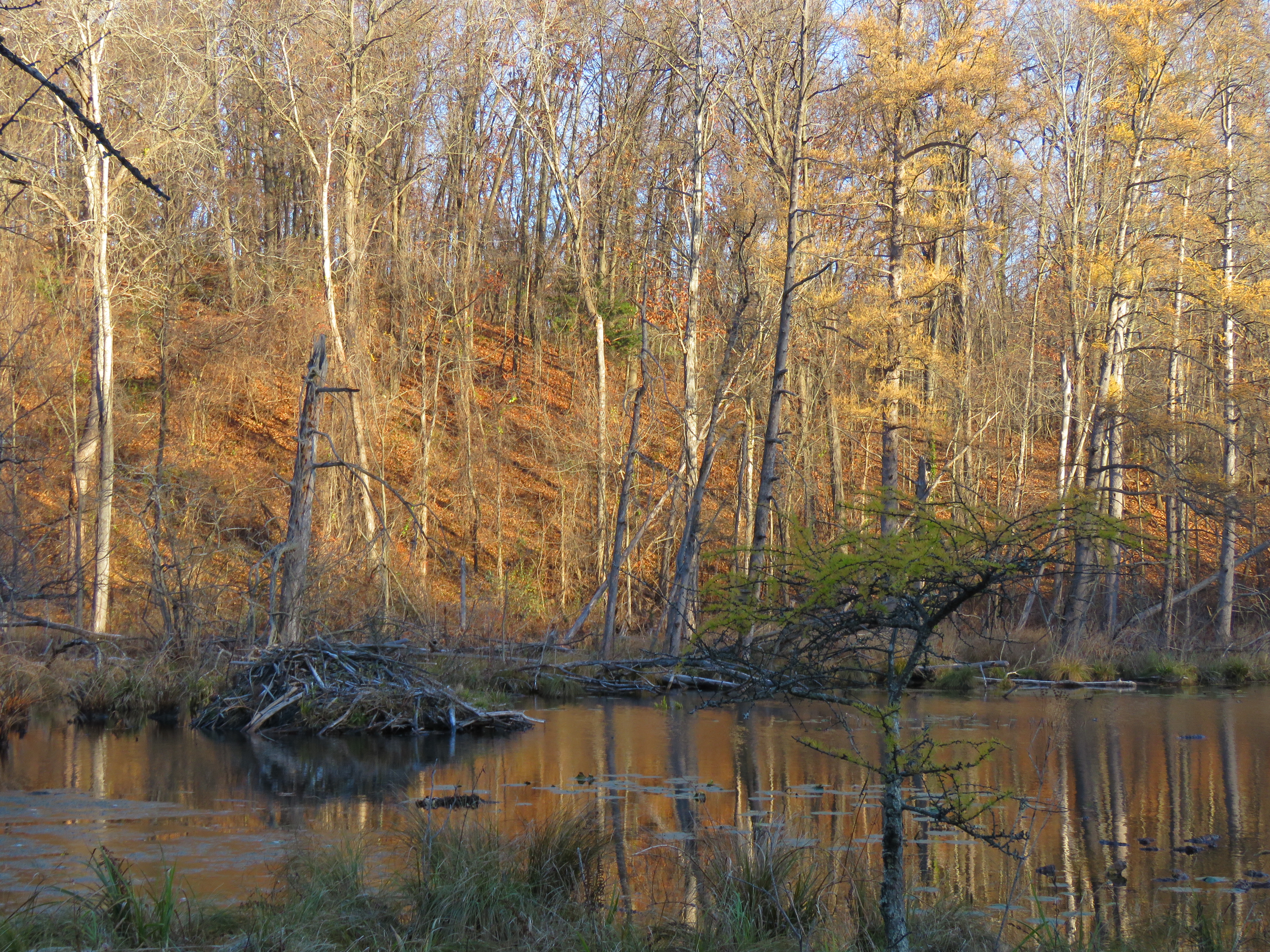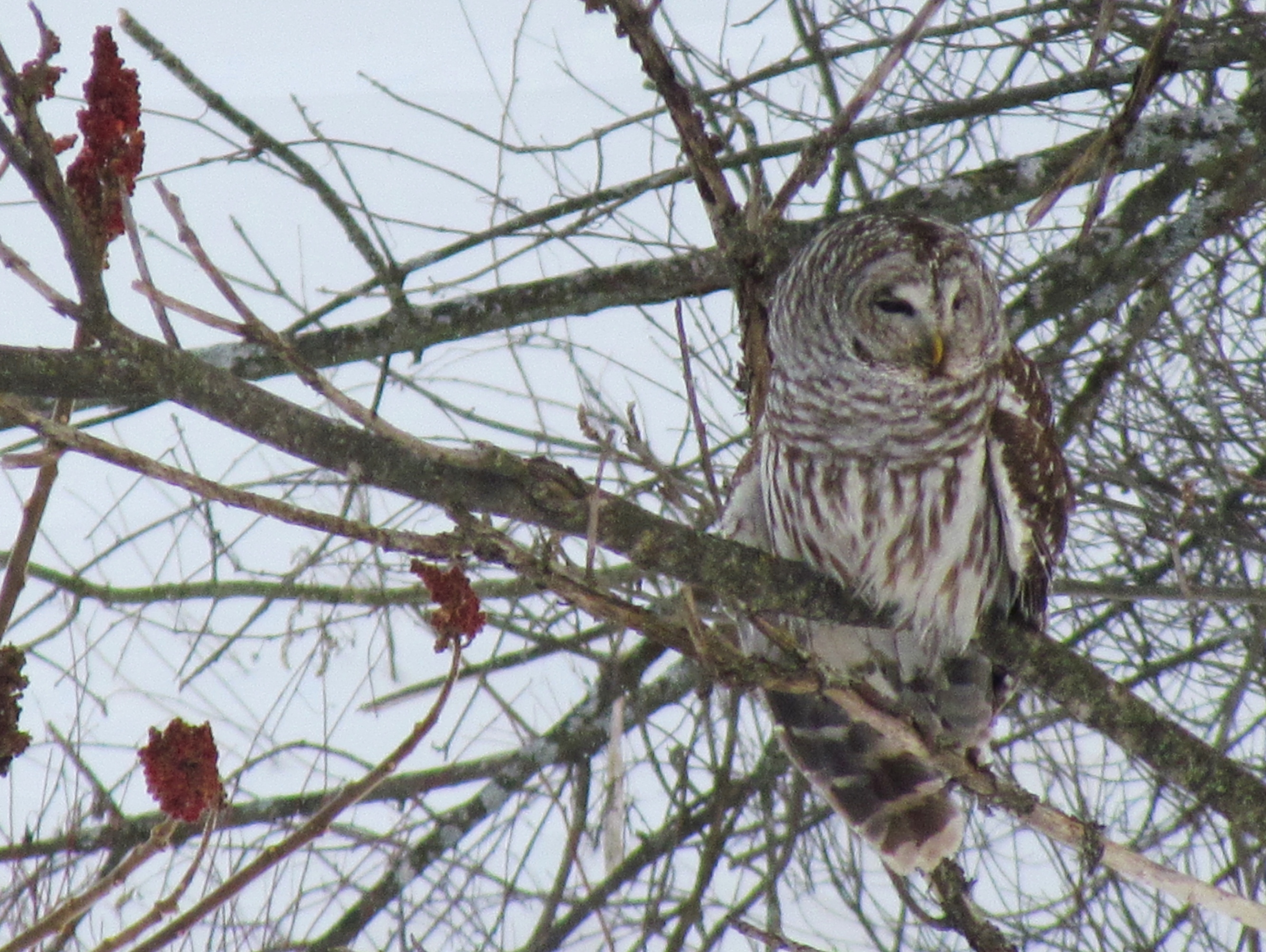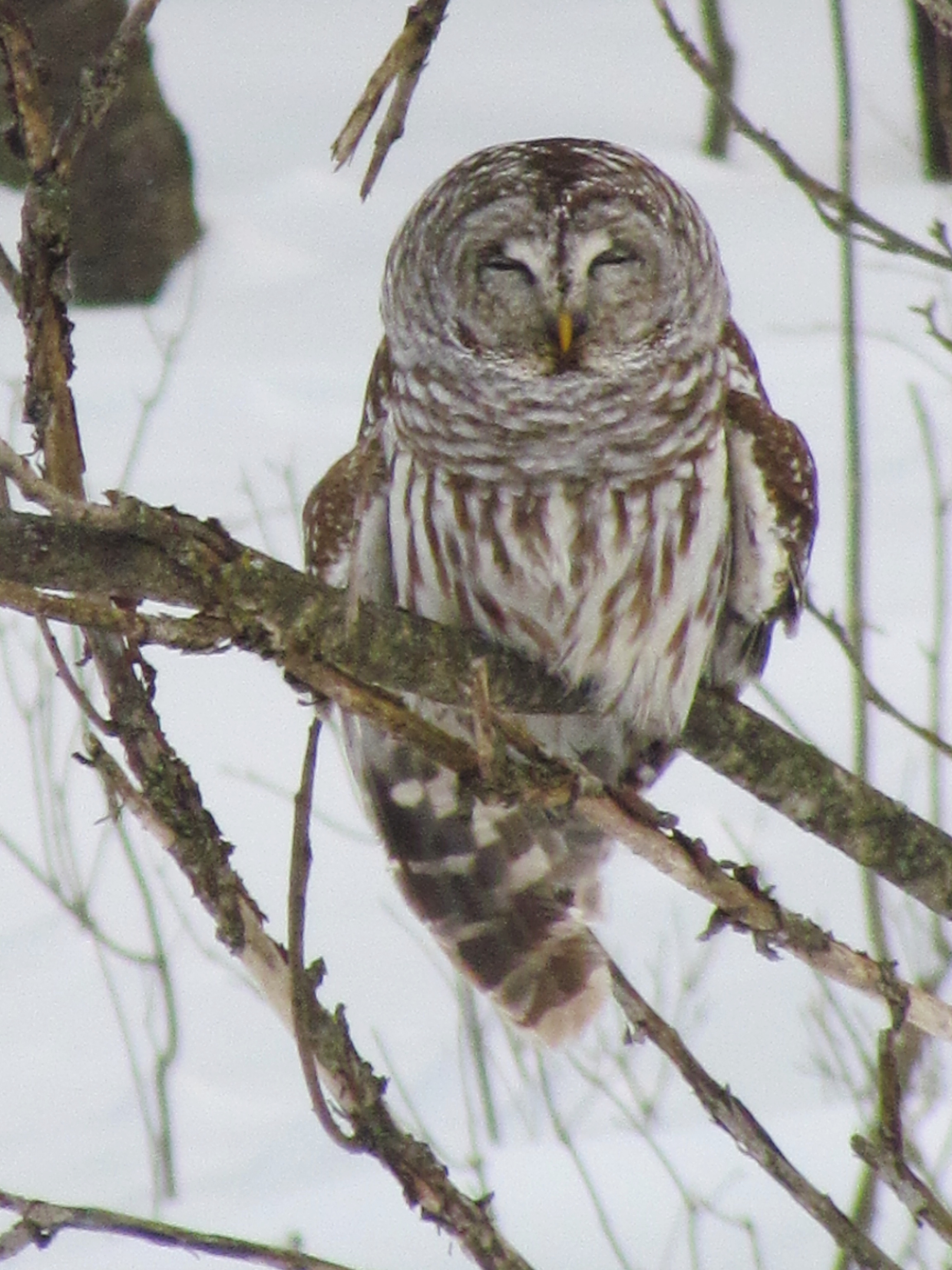WILDER SIDE OF OAKLAND COUNTY

The swamps and wetlands of Oakland County fell silent after heavy frost laced the landscape. Green frogs and bullfrogs are now lying on top of the muddy bottoms of shallow wetlands. No more ker-plunks of turtles attempting to discreetly slide off sunning logs. Except for the occasional warning crack of the tail of a beaver slamming forcefully against water, there are few surprise noises to be heard near the near magical world of the bog and the swamp. There is however one notable exception: the melodious and rich baritone hooting of our beautiful Barred Owls, an owl that some refer to as the “swamp owl”. Barred Owls (Strix varia) are breaking the silence of the swamps.

Barred Owl courtesy of Janet Hug
Although many bird species migrate south before winter, Barred Owls are year round residents of the “Wilder Side of Oakland County” and establish clearly defined territory through vocalization. Janet Hug, Social Media Administrator of the Oakland Audubon Society, and an avid birder, explains the reason behind the recent eruption of Barred Owl song this way, “In late autumn and early winter they start to talk and pair bond in anticipation of the breeding season in the winter.” On Sunday night, as the “supermoon” climbed in the sky, I listened to the rather ruckus melody of Barred Owls, adding to the pleasure of the evening, and a reminder to all who know nature’s way that natural cycles prevail. The Barred Owls know it’s their time to hoot.

Barred Owl courtesy of Lauren & Karl Oxlade
One need not wait for the next full moon to hear or see the Barred Owl, for these buffy-white beauties, with dark brown vertical barring and soulful eyes, are often seen in the day and sometimes sing before dark. Campers not wise to the way of owls sometimes become frightened when eerie calls, shrieks and hoots waft through the night. Not so in the case of Oakland County naturalist Lauren Oxlade and her husband Karl. During a backwoods adventure in Louisiana they were able to lure a Barred Owl to their campsite by playing an Audubon App of Barred Owl vocalization enabling Karl to capture this great image of an inquisitive barred owl looking at them.
The Barred Owl calls are distinctive, variable and unforgettable. The most common melody, perhaps an advertisement of their presence used to define territory has been described as, “Who cooks for you; Who cooks for you all!

Barred Owls are opportunist hunters. During the warm months their diet includes bats, bugs, frogs and fish. According to the Cornell Lab of Ornithology, “Barred Owls hunt by sitting and waiting on an elevated perch, while scanning all around for prey with their sharp eyes and ears. They may perch over water and drop down to catch fish, or even wade in shallow water in pursuit of fish and crayfish.” As winter approaches in Oakland County, the menu switches almost exclusively to small mammals including rabbits, mice, voles, squirrels, chipmunks, and opossums. Even Ruffed Grouse and Screech Owls fall prey to this skilled hunter.

I had the pleasure during past winters to watch and photograph a Barred Owl hunting at the edge of my meadow that overlooks the now silent swamp. The owl would perch on an extended tree limb with all attention paid to the snowy field. When the slightest of sound under the snow was detected it would glide down with outstretched talons to capture a meal, most likely a meadow vole tunneling under the snow. Then it was back to the tree branch to snooze in late afternoon sun.
Jonathan Schechter is the Nature Education Writer for Oakland County Government and blogs weekly about nature’s way, trails, and wildlife on the Wilder Side of Oakland County.
For the latest county news and events, visit our website and use #OaklandCounty on our Facebook, Twitter, Instagram and LinkedIn pages.

[…] melodious hoots of Great Horned Owls and the caterwauling conversations of the swampland-loving Barred Owls send shivers down the backs of folks who never tread trails after the sun […]
[…] down through the waters as they gulp algae and plankton. As darkness falls, raccoons, opossums and Barred owls hunt the edges looking for something to eat at the dawn of […]
[…] trees along the banks of a tributary of Stony Creek. Owl pellets, most likely from the swamp loving barred owl, were under one tree, and another tree was the obvious roost for wild turkeys. How do I know that? […]
[…] The geology of the land in the leafless days of winter’s end is an open story book. The hilly terrain and rock-strewn soil of Maybury is clear evidence of glacial action. As the glaciers retreated, great blocks of ice and meltwater outflow formed depressions in the soil. These wetland pockets will soon be teeming with breeding frogs and salamanders, the song of wood frogs, and spring peepers will fill the air. I noted a few early arrival Mallard Ducks and a pair of Mute Swans on a large pond with a fishing pier. That habitat looked excellent as a fishing ground for Great Blue Herons and American Egrets, and a hunting ground for Barred Owls. […]
[…] Huron Swamp slowly awakened in the dawn’s early light. An unseen Barred Owl hooted as the sky lightened. Although these swamp-loving owls with “soulful brown eyes” wing […]
[…] interrupted only by the drumming of Pileated Woodpecker, and then the melodious melody of a pair of Barred Owls. I felt a bit like an explorer stumbling into a hidden habitat that was mysteriously wild, where […]
[…] turtle, painted turtle, snapping turtle, sandhill crane, great horned owl, screech-owl, barred owl, red-tailed hawk, Cooper’s hawk, turkey, turkey vulture, tree swallow, eastern bluebird, muskrat, […]
[…] yip soon after dusk and Barred Owls sing to the sunrise. The hum of crickets is nearly constant at night and will remain so until a […]
[…] have done on traditional night hikes in search of our resident Screech Owls, Great Horned Owls and Barred Owls. Almost all sightings of Snowy Owls occur in the daylight hours and they are seen most often […]
[…] of ounce, undertake such a journey, while much larger, powerful birds including Great Horned Owls, Barred Owls, Red-tailed Hawks, and Cooper’s Hawks stay in town? As you have realized by now, it’s mostly […]
[…] Barred Owls, mink and pileated woodpeckers are three other local creatures that take advantage of the “relatively” easy living in a cedar swamp habitat. Hikers in the know will often see the rectangular shaped cavities created by pileated woodpeckers hunting for insects and grubs and a few may even spot a deep nesting cavity. Exploring a cedar swamp in these waning and wet days of winter is a grand adventure, but caution is needed. Hidden pockets of water are present, some mud has the ability to almost suck boots of feet, logs are slippery and the landscape can confuse a novice as to the best way to get back out. But for those that are prepared, it’s a beautiful nature-embracing experience on the wilder side of Oakland County. […]
[…] swimming in a flood of rabbits, but rabbits have a long list of local lurking predators including Barred Owls, Great Horned Owls, Red-tailed Hawks, coyotes, red fox, gray fox, weasels, mink, feral and domestic […]